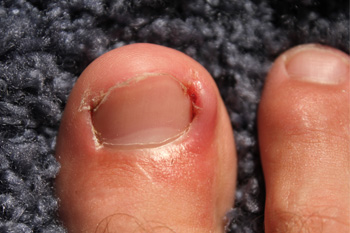 A common symptom of pregnancy that many women experience is swollen ankles. This can happen as a result of the growing fetus, and may become worse in the warmer weather. Additionally, it can be uncomfortable as the pregnancy progresses, and relief may be found when specific lifestyle changes are implemented. These can include drinking plenty of fresh water daily, frequently elevating the feet, and it may help to sleep on the left side. Many women find that it may help to refrain from crossing the legs, in addition to exercising, and performing specific stretches. If you would like more information about how pregnancy affects the feet and ankles, please consult with a podiatrist.
A common symptom of pregnancy that many women experience is swollen ankles. This can happen as a result of the growing fetus, and may become worse in the warmer weather. Additionally, it can be uncomfortable as the pregnancy progresses, and relief may be found when specific lifestyle changes are implemented. These can include drinking plenty of fresh water daily, frequently elevating the feet, and it may help to sleep on the left side. Many women find that it may help to refrain from crossing the legs, in addition to exercising, and performing specific stretches. If you would like more information about how pregnancy affects the feet and ankles, please consult with a podiatrist.
Pregnant women with swollen feet can be treated with a variety of different methods that are readily available. For more information about other cures for swollen feet during pregnancy, consult with one of our podiatrists from Foot Health Center of Merrimack Valley. Our doctors will attend to all of your foot and ankle needs.
What Foot Problems Can Arise During Pregnancy?
One problem that can occur is overpronation, which occurs when the arch of the foot flattens and tends to roll inward. This can cause pain and discomfort in your heels while you’re walking or even just standing up, trying to support your baby.
Another problem is edema, or swelling in the extremities. This often affects the feet during pregnancy but tends to occur in the later stages.
How Can I Keep My Feet Healthy During Pregnancy?
- Wearing orthotics can provide extra support for the feet and help distribute weight evenly
- Minimize the amount of time spent walking barefoot
- Wear shoes with good arch support
- Wear shoes that allow for good circulation to the feet
- Elevate feet if you experience swelling
- Massage your feet
- Get regular, light exercise, such as walking, to promote blood circulation to the feet
If you have any questions please feel free to contact one of our offices located in North Andover, and Tewksbury, MA . We offer the newest diagnostic and treatment technologies for all your foot and ankle needs.










